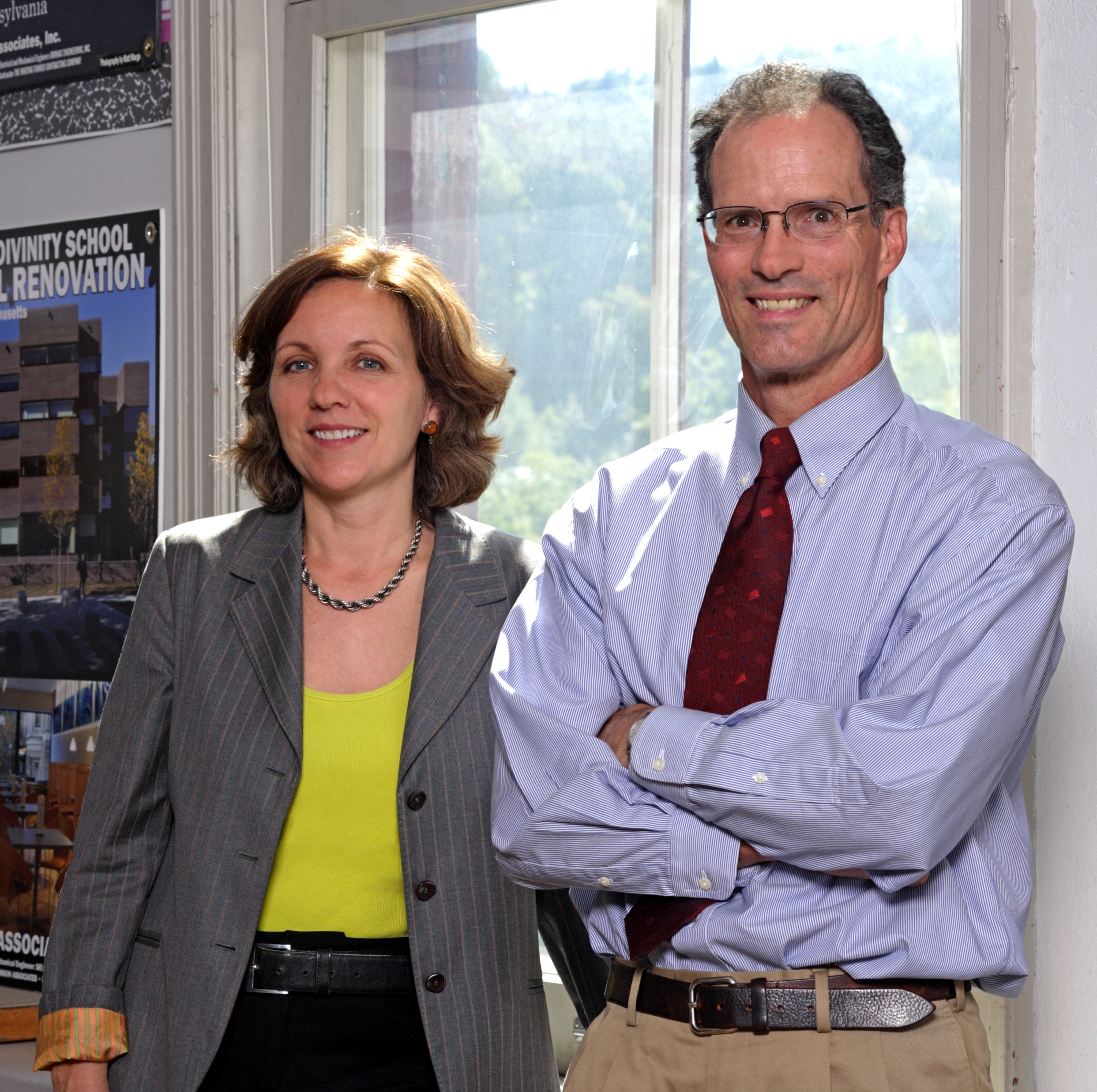The design firm Venturi, Scott Brown and Associates, Inc. has become VSBA, LLC and is now under the leadership of president and principal Daniel K. McCoubrey. McCoubrey, together with fellow principal Nancy Rogo Trainer, will build on architectural and planning principles instituted by founders Robert Venturi and Denise Scott Brown.
Dan McCoubrey was principal-in-charge for the Curtis Institute of Music’s new Lenfest Hall and for additions and renovations at the Allentown Art Museum. He recently directed a series of projects for Dumbarton Oaks in Washington, D.C., including a new research library. He has led projects for Penn, Harvard, Yale, Dartmouth, the Barnes Foundation, and the Museum of Contemporary Art, San Diego, among others. A graduate of Penn’s School of Architecture, he has taught at Drexel since 1986, lectures widely, and is a member of the Philadelphia Historical Commission Architectural Review Committee.
Nancy Rogo Trainer was recently principal-in-charge for renovation of historic Fay House at the Radcliffe Institute at Harvard, where she directed renovation of Schlesinger Library and campus planning. She led campus plans for Villanova, Bryn Mawr, and Haverford and designed projects at Harvard Divinity School and Bryn Mawr, among others. A graduate of Penn’s School of Architecture, Nancy teaches at Drexel, lectures extensively, and is a member of the Philadelphia City Planning Commission.
After over fifty years as one of the world’s most renowned architects, Bob Venturi has retired from practice, while Denise Scott Brown continues to publish and present her work. +
Related Stories
Cultural Facilities | Feb 25, 2015
Edmonton considering 'freezeway' to embrace winter
If the new Edmonton Freezeway is constructed, residents will have an 11-km course that winds through the city and allows them to skate to work, school, and other city activities.
Building Team | Feb 24, 2015
Call for entries: 2015 Giants 300 survey
The annual Giants 300 Report ranks the top AEC firms in commercial construction, by revenue.
Industrial Facilities | Feb 24, 2015
Starchitecture meets agriculture: OMA unveils design for Kentucky community farming facility
The $460 million Food Port project will define a new model for the relationship between consumer and producer.
University Buildings | Feb 23, 2015
Future-proofing educational institutions: 5 trends to consider
In response to rapidly changing conditions in K-12 and higher education, institutions and school districts should consider these five trends to ensure a productive, educated future.
Office Buildings | Feb 23, 2015
The importance of quiet and the consequences of distraction
Recent work style studies show that the average knowledge worker spends 25-35% of their time doing heads-down focused work. Once thrown off track, it can take some 23 minutes for a worker to return to the original task.
Modular Building | Feb 23, 2015
Edge construction: The future of modular
Can innovative project delivery methods, namely modular construction, bring down costs and offer a solution for housing in urban markets? FXFOWLE’s David Wallance discusses the possibilities for modular.
| Feb 23, 2015
6 trends changing the way city dwellers live
Across the cultural grid, from food to retail to transportation, America's urban areas are already undergoing a major metamorphosis. Here are the six major trends shaping our cities, from Fast Company.
Green | Feb 23, 2015
State of the green union, and the next big shift in sustainability
The history of the green movement offers cues that we are on the precipice of another significant shift in the green union.
| Feb 23, 2015
Where are the iconic green buildings?
What does a green building look like? How would you know one if you saw one? Maybe a trivial question to some, but of great interest to architects, designers, and other members of the Building Team as the rapid evolution of sustainable buildings continues apace.
Sports and Recreational Facilities | Feb 21, 2015
Pumped-up recreation centers help build body, mind, and spirit
Adopting facility layouts from Asian and European models, today’s sports and recreational buildings are becoming social hubs that accommodate a variety of community needs.















